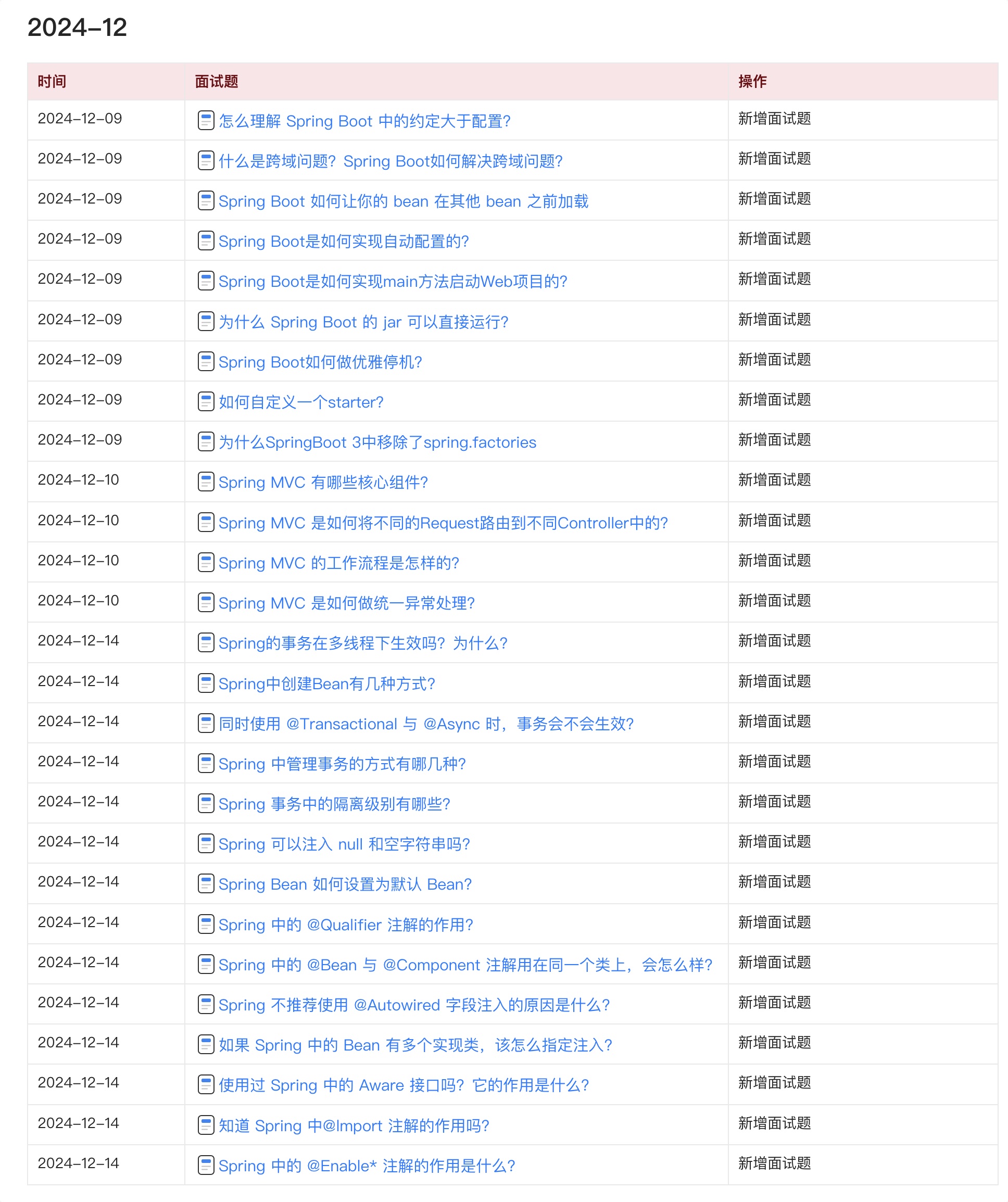在看源码的过程中发现用到的设计模式还是很多的,最近博主正好也学习了些设计模式,所以总结了下源码中所用到的设计模式,可能还有很多设计模式没找出来,有兴趣的可以一块来探讨呀。
一、责任链模式
- 责任链模式学习请点这里
- 其实接收web请求的整个过滤器链形成的处理方式就是责任链模式。如果想看完整写的责任链模式可以参考:
org.springframework.security.web.FilterChainProxy#doFilterInternal - 方法中定义了一个
VirtualFilterChain类型的虚拟过滤器链对象,他的目的主要是更方便的在Spring Security过滤器链中传递请求,从它的入口处理和结束都有,很详细了。
二、代理模式
- 代理模式学习请点这里
- 【此处是否用到了代理模式有待考究,欢迎大家来一起探讨】
FilterChainProxy就是个代理类,它代理的是 Spring Security 中的所有过滤器链,同时它也是一个过滤器,所以可以加入到 ServletContext,使用代理目的应该是不直接把 Spring Security 中的过滤器链直接暴露给 ServletContext,从而达到保护的目的,还能降低程序的耦合度。
三、模板方法
- 模板方法模式学习请点这里
org.springframework.security.config.annotation.AbstractConfiguredSecurityBuilder#doBuild,这里就使用到了模板方法doBuild()方法里面定义了一个算法骨架,程序按照这个算法(beforeInit()、init()、beforeConfigure()、configure()、performBuild())去执行,而算法中每个方法可以被子类去实现。
四、适配器模式
- 适配器模式学习请点这里
- 配置器中
WebSecurityConfigurerAdapter就是个适配器类,使用适配器的好处是我们可以选择性的配置想要修改的那一部分配置,而不用覆盖其他不相关的配置。 - 比如它提供了三个重载的
configure方法,我们不需要使用它的configure(HttpSecurity http),于是我们自己定义一个配置类继承这个适配器,覆盖掉它的这个方法使用我们自定义的配置,而且我们一般都是这么做的。
五、建造者模式
- 建造者模式学习请点这里
- 整个建造者的架构就是个建造者模式,利用
HttpSecurity、WebSecurity对需要的一些属性进行配置,最后构建出核心过滤器springSecurityFilterChain。 - 比如我们使用
HttpSecurity链式调用的方式去配置很多属性,比如配置我们需要的过滤器、自定义的过滤器等等,配置好后最终构建出所需的对象。
六、装饰者模式
- 装饰者模式学习请点这里
- 来看看这个类
org.springframework.security.config.annotation.ObjectPostProcessor,里面有个 postProcess 方法,入参是 O类型,出参也是 O类型,是不是符合装饰者模式:增强原有对象,而不改变原有对象
public interface ObjectPostProcessor<T> {
<O extends T> O postProcess(O object);
}
- 框架中用的很多,对传入的对象进行后置处理,比如:
org.springframework.security.config.annotation.web.configuration.WebSecurityConfiguration#springSecurityFilterChainorg.springframework.security.config.annotation.authentication.builders.AuthenticationManagerBuilder#performBuildorg.springframework.security.config.annotation.web.configuration.WebSecurityConfiguration#setFilterChainProxySecurityConfigurer
七、策略模式
-
在认证授权那一块用到了策略模式 + 委托模式,先来看图

-
AuthenticationProvider是策略接口,后面三个都是它的实现类,定义了不同的策略(这里只列出三个,中间两个是自定义的策略) -
最左边的
ProviderManager中有个providers属性,类型是List<AuthenticationProvider>,它其实就是个委托类 -
在运行过程中,所有的策略都会委托给
ProviderManager保存到providers属性中,即委托类会收集所有的策略,执行时会循环providers看哪个策略能支持(supports())去认证,匹配中的话就执行其策略。参考这段代码:org.springframework.security.authentication.ProviderManager#authenticate
public Authentication authenticate(Authentication authentication)
throws AuthenticationException {
Class<? extends Authentication> toTest = authentication.getClass();
AuthenticationException lastException = null;
Authentication result = null;
boolean debug = logger.isDebugEnabled();
for (AuthenticationProvider provider : getProviders()) {
if (!provider.supports(toTest)) {
continue;
}
if (debug) {
logger.debug("Authentication attempt using "
+ provider.getClass().getName());
}
try {
result = provider.authenticate(authentication);
if (result != null) {
copyDetails(authentication, result);
break;
}
}
catch (AccountStatusException e) {
prepareException(e, authentication);
// SEC-546: Avoid polling additional providers if auth failure is due to
// invalid account status
throw e;
}
catch (InternalAuthenticationServiceException e) {
prepareException(e, authentication);
throw e;
}
catch (AuthenticationException e) {
lastException = e;
}
}
}
八、委托模式
- 委托模式不是 GOF(Gang of Four) 23种设计模式之一。
- 源码示例参考策略模式。
九、系列文章
- 《手把手教你如何使用Spring Security(上):登录授权》
- 《手把手教你如何使用Spring Security(中):接口认证》
- 《手把手教你如何使用Spring Security(下):访问控制》
- 《Spring Security源码(一):整体框架设计》
- 《Spring Security源码(二):建造者详解》
- 《Spring Security源码(三):HttpSecurity详解》
- 《Spring Security源码(四):配置器详解》
- 《Spring Security源码(五):FilterChainProxy是如何创建的?》
- 《Spring Security源码(六):FilterChainProxy是如何运行的?》
- 《Spring Security源码(七):设计模式在框架中的应用》
- 《Spring Security源码(八):登录认证源码流程》
- 《Spring Security源码(九):过滤器链上的过滤器是如何排序的?》
- 《Spring Security源码(十):权限访问控制是如何做到的?》
- 《Spring Security OAuth:客户端模式超简单实现》
- 《Spring Security OAuth:源码解析之还是内味儿》
Java 面试宝典是大明哥全力打造的 Java 精品面试题,它是一份靠谱、强大、详细、经典的 Java 后端面试宝典。它不仅仅只是一道道面试题,而是一套完整的 Java 知识体系,一套你 Java 知识点的扫盲贴。
它的内容包括:
- 大厂真题:Java 面试宝典里面的题目都是最近几年的高频的大厂面试真题。
- 原创内容:Java 面试宝典内容全部都是大明哥原创,内容全面且通俗易懂,回答部分可以直接作为面试回答内容。
- 持续更新:一次购买,永久有效。大明哥会持续更新 3+ 年,累计更新 1000+,宝典会不断迭代更新,保证最新、最全面。
- 覆盖全面:本宝典累计更新 1000+,从 Java 入门到 Java 架构的高频面试题,实现 360° 全覆盖。
- 不止面试:内容包含面试题解析、内容详解、知识扩展,它不仅仅只是一份面试题,更是一套完整的 Java 知识体系。
- 宝典详情:https://www.yuque.com/chenssy/sike-java/xvlo920axlp7sf4k
- 宝典总览:https://www.yuque.com/chenssy/sike-java/yogsehzntzgp4ly1
- 宝典进展:https://www.yuque.com/chenssy/sike-java/en9ned7loo47z5aw
目前 Java 面试宝典累计更新 400+ 道,总字数 42w+。大明哥还在持续更新中,下图是大明哥在 2024-12 月份的更新情况:

想了解详情的小伙伴,扫描下面二维码加大明哥微信【daming091】咨询

同时,大明哥也整理一套目前市面最常见的热点面试题。微信搜[大明哥聊 Java]或扫描下方二维码关注大明哥的原创公众号[大明哥聊 Java] ,回复【面试题】 即可免费领取。

